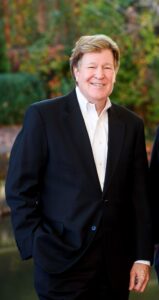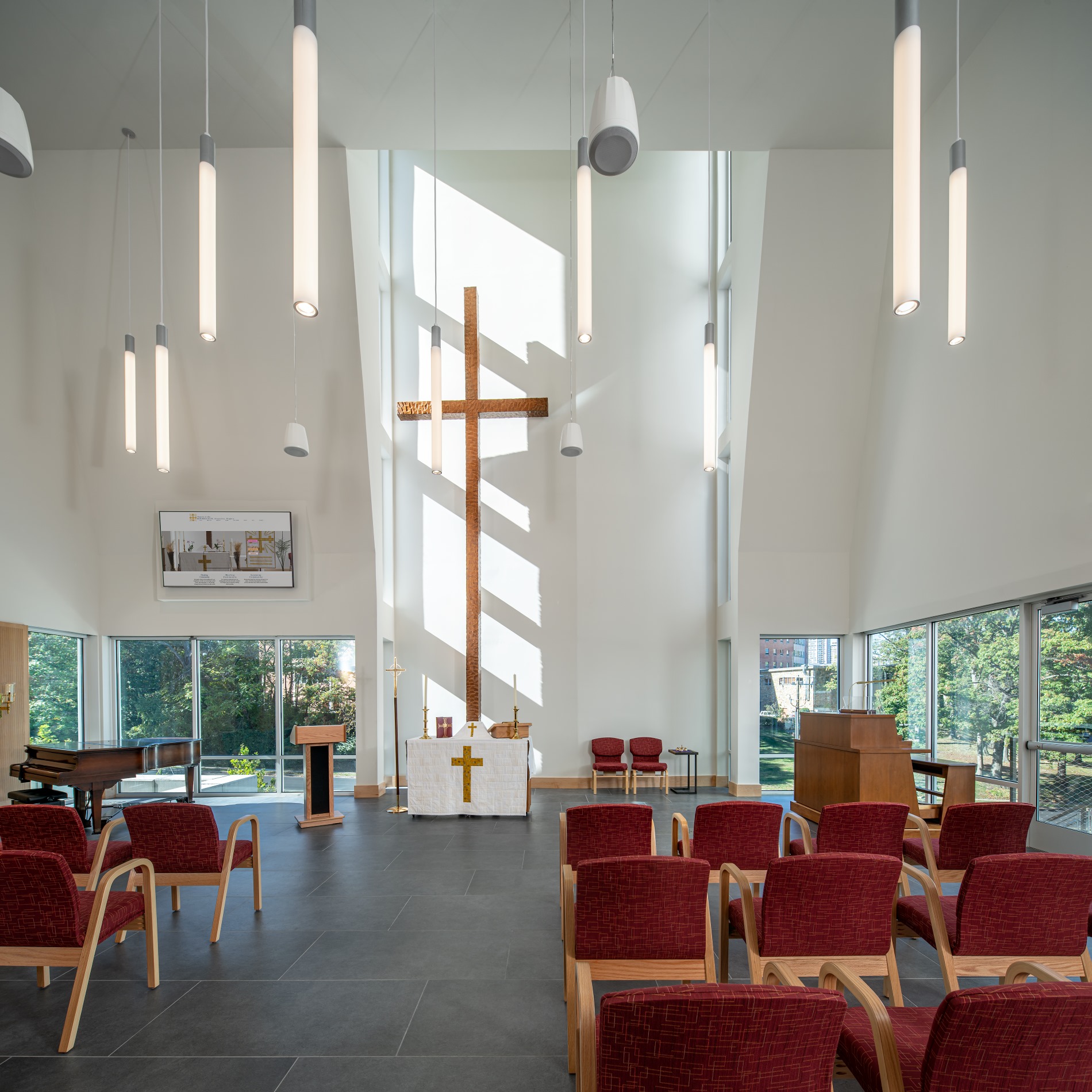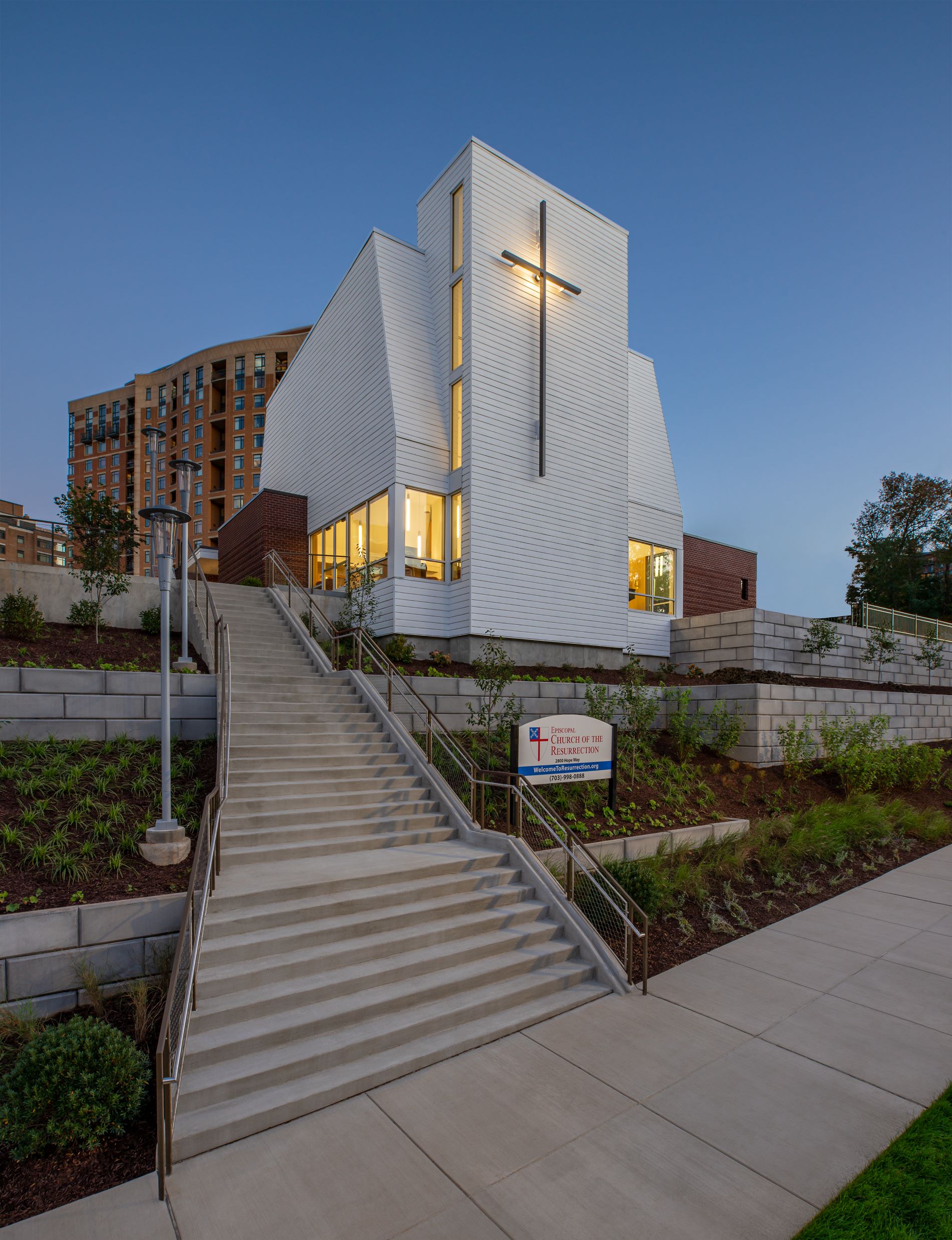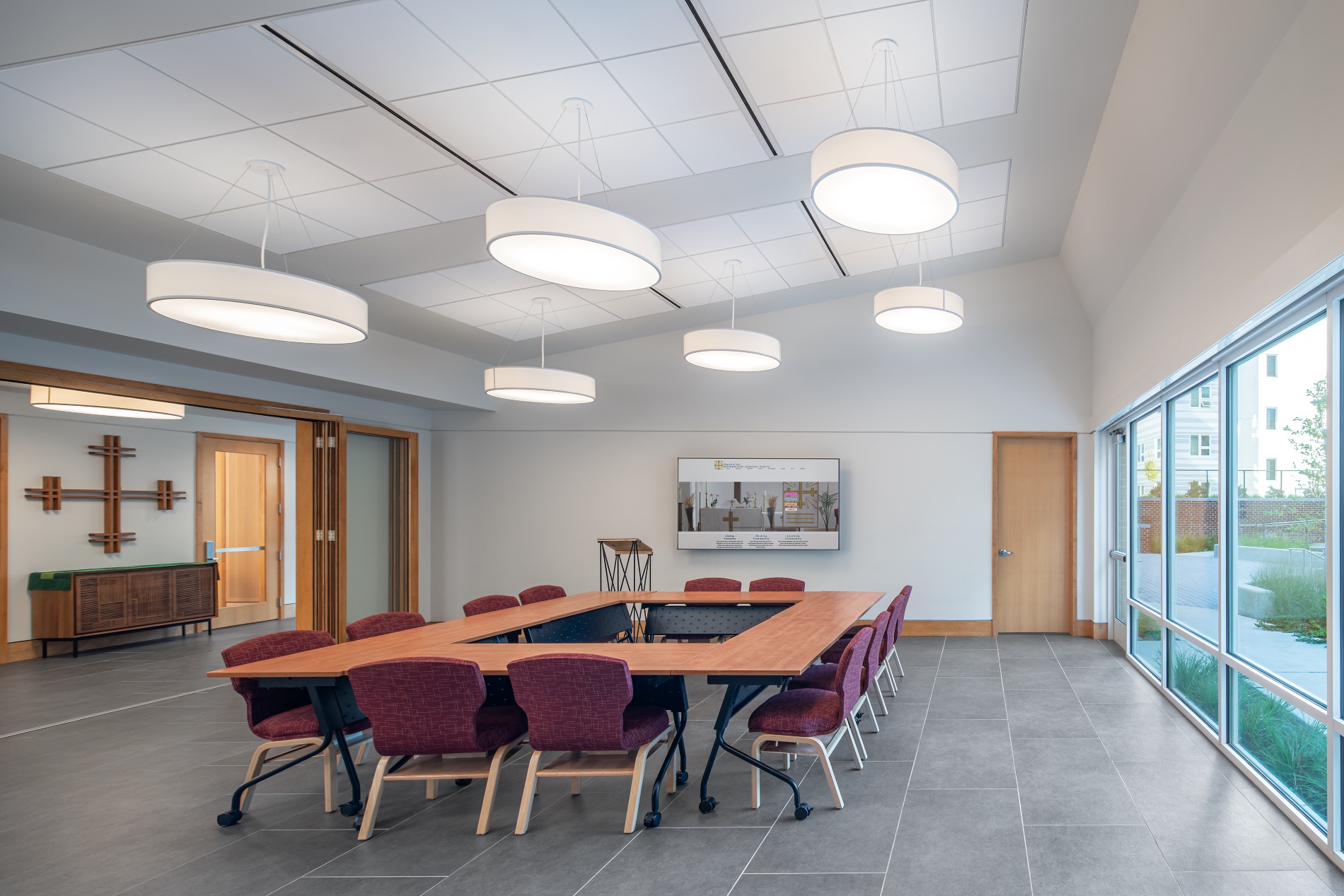
Lee Quill, founding principal of Cunningham Quill Architects. Allen Russ Photography
Tell us about your firm and interest in social responsibility.
Our 27-year-old firm typically does architecture, master planning, and urban design. Our goal is to push the envelope to create design excellence. And our firm is a little different in that we always strive for our projects to give back to the community and to be environmentally friendly. We integrate sustainability from the very beginning.
What is challenging about transitioning a religious property?
You must be very cognizant of what is happening within the congregation and be there to support the process. Some congregations have extra land, which would allow for changes without impacting church buildings, while more constrained congregations must decide whether they are willing to give up their church building itself to fulfill a mission. It is very important for a congregation not to jump into a transition without taking the time for discernment. Another challenge I have seen with religious properties is folks not fully knowing what is possible with their land and buildings. How much land can really be used for what you want to do? What is your zoning? Are there utility, environmental, or highway easements on your land? The political climate of the community is also important. We have heard of churches that have tried to move forward with a transition, and the community was against it. It is very important for congregations to have effective community engagement. They must inform surrounding neighbors of the positive contributions a transition project can bring to their community. You do not want to get too far into your project and then encounter roadblocks.
How did you get involved with the Episcopal Church of the Resurrection?
Affordable Homes and Communities Inc. had the first connection with the church and brought our firm on to help create affordable housing on the church land and look at the colocation of the housing and newly configured church. The congregation had done a yearlong discernment and came out of that process with the goal of offering up their site for affordable housing: 98% of the congregation approved. They were very focused on their mission. Instead of “what can’t we do,” it was always “what can we do.” The rector, Rev. Jo J. Belser, said, “God will provide.” It was very inspirational.
What was the original church building like?
The original building was a 1965 modern dark-brown brick church sitting on a hill above the main boulevard in Alexandria. It had no window connection to the outside other than clerestory windows under the eaves of the roof. One goal in the transition was to visually connect the new buildings to the landscape and create sustainable gardens on the site.
Describe the finished project.
The project includes 113 family units in the U-shaped affordable housing building, a courtyard, the new 5,000-square-foot church, and a connector stair down to the street. There is a small amount of parking with permeable paving. We added native and drought-resistant plants, retained a memorial garden, and terraced and stepped the steep slope. The result is much more environmentally friendly, and the buildings relate to one another and the street below.
How did you work to stay within budget?
The project development received money for the affordable housing from multiple sources — local and state government, banks, grants, and so on. As part of the final development agreement, money was found for a very economical church. At one point during the process the congregation was considering having just an altar on wheels that rolled out of a closet in the affordable housing building’s community room: they were willing to go that far for their mission! In creating this church building we pushed the economical materials as far as they could go. It is basically a wood structure with limited steel construction. The floor looks like slate, but it is porcelain tile. We chose very affordable fixtures and focused the design on incorporating natural light. We brought the cross from the old church to the new facility. In addition, we designed the space to be flexible so it could serve multiple purposes. The church is connected by glass folding doors to the parish hall through a narthex, and on special occasions they can open the space, move chairs, and run a table straight through.
How have the people who use these buildings been affected?
The shared outdoor space has increased the community connection between the affordable housing and the church. Residents walk the grounds, and they love the landscape. Kids ride their bikes there. Some folks who live in the housing do attend the church, too. It has reinvigorated the congregation. They are getting new members and increased diversity. Their church serves as not just a place for worship but also for concerts and lectures. It is truly a community space.




